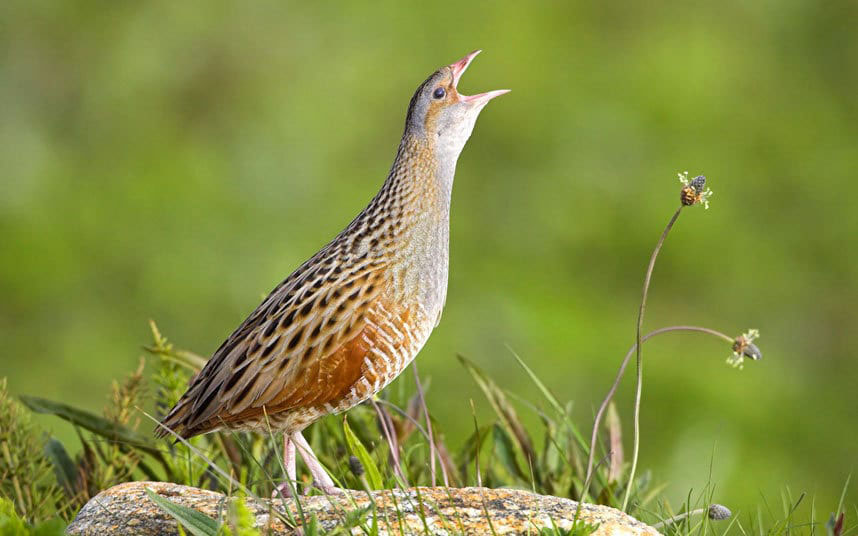
The elusive corncrake.
WILDLIFE experts say there is no cause for alarm despite a fall for the third year in a row in the number of corncrakes in Donegal.
Census figures for 2017 show that the number of calling males detected on Donegal’s mainland and its islands dipped last year to just 92, down by 16 on the previous 12 months.
The decrease was mirrored nationally with the number of corncrakes falling to 140. That is down from the 168 recorded in 2016 and 230 in 2014.
The elusive bird, known for its rasping call, was once widespread across the countryside and during the 1950s corncrakes were found in almost every county in Ireland.
The population is now confined mainly to Donegal, Mayo, and Connemara.
Ireland is not alone in experiencing a decline in the corncrake – official figures from Scotland show that the numbers have dropped by 32 per-cent, from 1,289 calling males in 2014 to 866 last year.
But speaking following the 2017 census results, both Birdwatch Ireland and the government’s own wildlife authorities warned against talk of extinction.
They say that population numbers do tend to fluctuate and that a number of factors, including the weather, may have impacted on the most recent counts.
Anita Donaghy, Senior Conservation Officer with Birdwatch Ireland, said that during the 1990s, as few as 46 calling males were counted in Donegal.
Ms Donaghy said, “It is the third year in a row the population has declined and the peak for us in recent years in Donegal was in 2014 when we had over 150 recorded. So it is down quite a bit and it has been year on year which is quite concerning.
“But if you go back to the 1990s when the Corncrake Conservation Programme was initiated, we were down to 46 calling males. We are well above that and it has been going in the right direction so no, we are not on the brink of extinction.”
Since 2012 the State has spent over €2.4m on various initiatives to save the corncrake. Traditionally the birds have responded to efforts to help them but Anita Donaghy said that in light of the recent decline, a greater push was needed on the part of the government.
Marie Duffy, supervisor of the corncrake programme, also said the fall in numbers was concerning but not alarming.
She said that because of the weather in 2017, volunteers had not always been able to get to more remote parts of Donegal to carry out their studies.
Ms Duffy said that significant efforts were ongoing to conserve and protect habitats for the birds and that for the first time, that drive was being extended to islands like Inishboffin, Tory and Gola.
“We have had numbers like this before,” Ms Duffy said.
“We started this scheme in 1993 and we have had numbers even lower than what we have the at moment.
“But the corncrake population can bounce back very quickly if their needs are provided for and this year we are doing a lot of work on habitat management both on the mainland and out on the islands.”
Receive quality journalism wherever you are, on any device. Keep up to date from the comfort of your own home with a digital subscription.
Any time | Any place | Anywhere
Posted: 4:29 pm February 7, 2018









